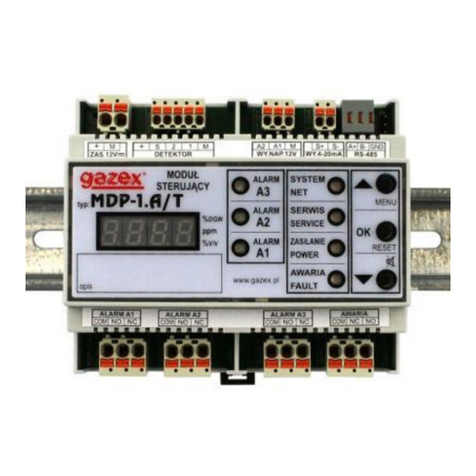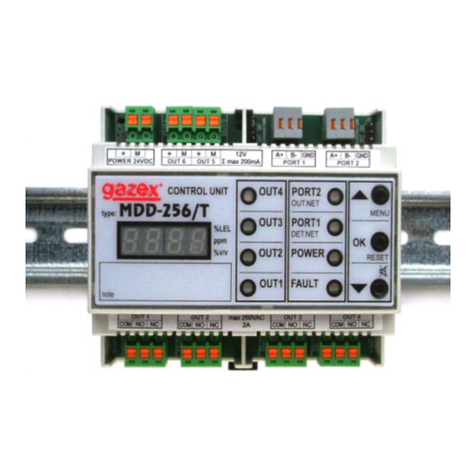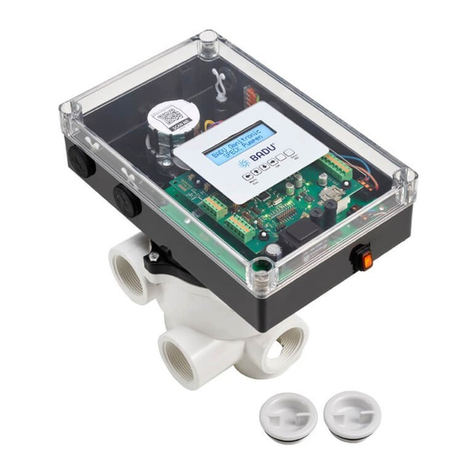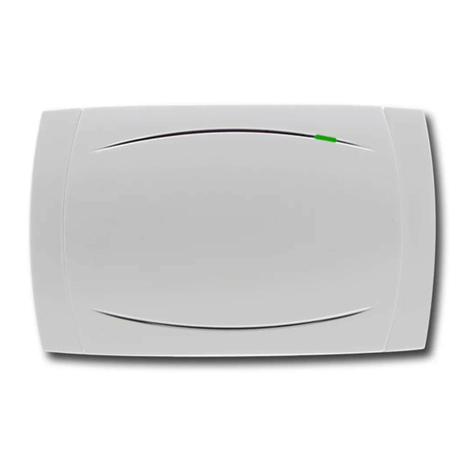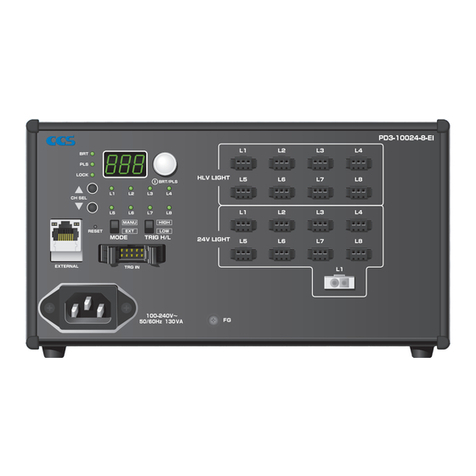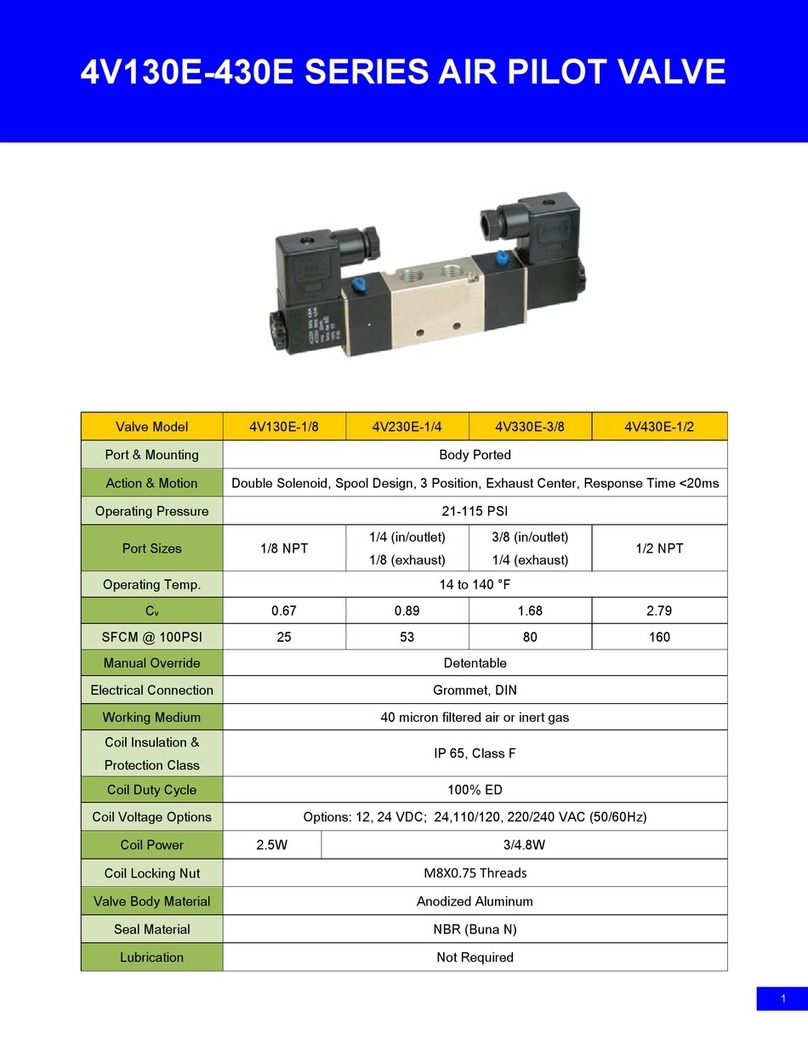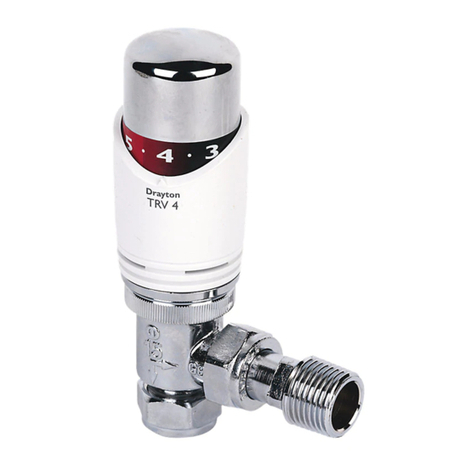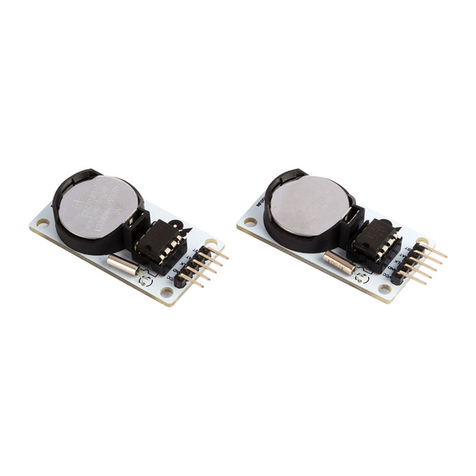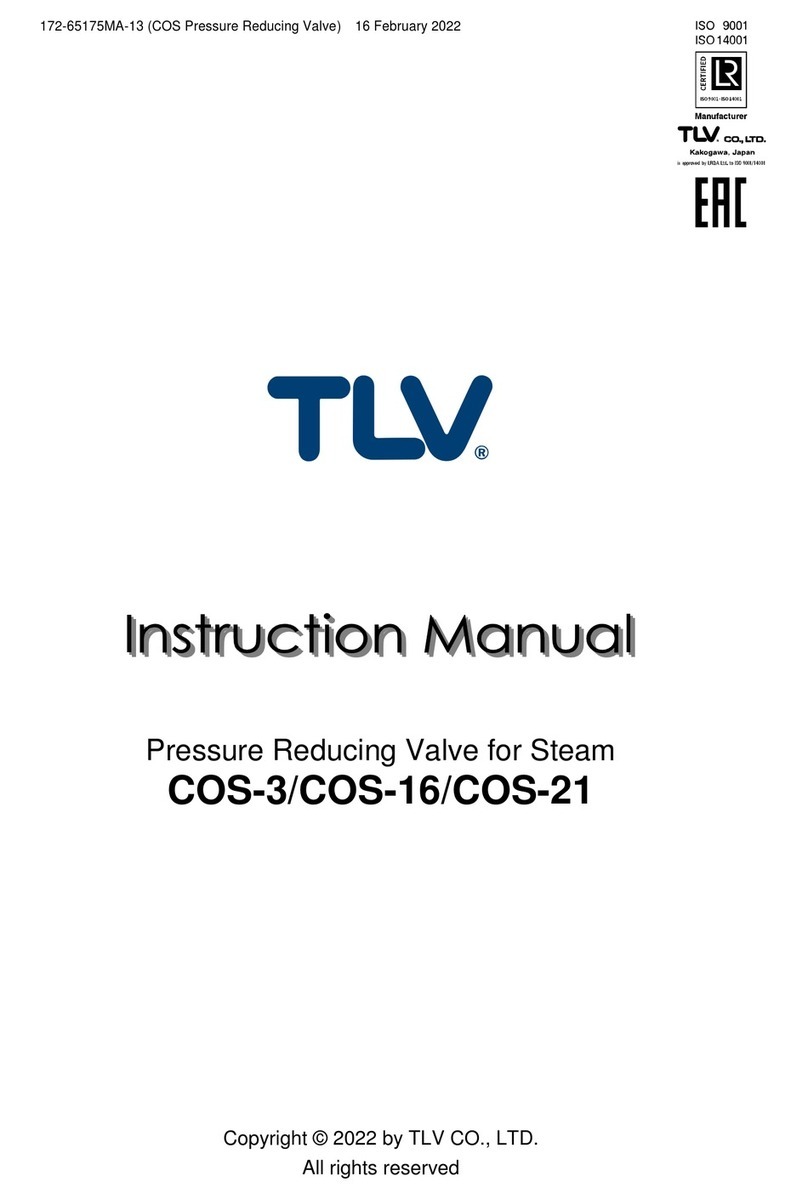gazex MD-2 User manual

Warszawa
Control Unit
type
USER’S
MANUAL
edition 2U3en
MD-2
MD-2.A
MD-4
MD-4.A
series U3
Read carefully this entire manual BEFORE
installation.
The installation can be started after the
content of this manual has been fully
understood.
Follow the recommendations and
warnings provided in this manual
to maintain safety when installing
and operating the unit.
Keep the manual as reference for the User
of the Two-Threshold Gas Detection System.
MD-2(4).( A ) Control Unit, User’s Manual edition 2U3en gazex’2011 v1108 Page 1/14
1. Application and compatibility table page 2
2. Specifications 3
3. Description and connection of MD in the system 4
4. Installation of MD 7
PROBLEM? Helpful tips 10
5. Maintenance / operation 10
Periodical Inspection Protocol 12
PRODUCER:
PRODUCER:
©gazex ’2011 All right reserved. Reproducing and copying of this manual in whole or part without consent of GAZEX is prohibited.
Logo of gazex, name of gazex, dex, ASBIG, Active Safety System of Gas System are reserved trademarks of GAZEX
Logo of TÜV CERT EN ISO 9001 is a reserved trademark of TÜV Rheinland Euroqua.
Work and live SAFER with us!!! ©gazex

MD-2(4).( A ) Control Unit, User’s Manual edition 2U3en gazex’2011 v1108 Page 2/14
1. APPLICATION
Control units, types MD-2, MD-2.A, MD-4,MD-4.A of U series are intended ONLY for control of
and supplying power to gas detectors of DEX®type - F and FA series and DG type -F1 and FvU series,
manufactured by GAZEX for use in Two-Threshold Gas Detection System.
Each of the mentioned units is referred to hereinafter as „MD” module (or control unit) unless the
description refers to other specific model.
Terms: „Detector” or „DEX” used hereinafter shall refer to DEX/F... and DG detectors for all gas types
unless the description shall refer to other specific model.
NOTE:
Operation of MD-series control units with DEX®detectors of C series, versions M... and DG series M... is
allowed provided that the maximum permitted lengths of connection cables between the detector and the
module (described in Section 4.2 of this manual) are reduced by 50%.
The unit can control operation of one or two (MD-2, MD-2.A) or up to four (MD-4, MD-4.A) two-threshold
DEX and/or DG detectors (various detector types can be used at a time).
Features and functions of MD:
- provides 9V voltage to individual detectors (including load control) – can operate with DEX/F...
detectors
- controls the cable connection with the detectors (provides signals in case of a break of any
conductor),
- provides optical signals and stores alarm states of each detector and state of control outputs,
- allows manual release of output command signals (without a need to generate alarm signals of
detectors),
- allows continuous 12V DC power supply for additional devices („MDX” terminal)
- allows operation with additional modules (cascade-wise) through alarm input (galvanically isolated)
- 12V voltage alarm outputs supply power to additional acoustic and optical signalling devices
- contact outputs (galvanically isolated from the system) control fans, motors, contactors and
information boards
- „EMERGENCY” contact output (galvanically isolated from the system) informs on emergency state
of the module.
1.1.TABLE OF COMPATIBILITY
Type of Detector Series/models MD Control Unit series
U3, U2, U1,
MCU, MC
MB,MA,M(7...9) M(1...6), nx
DEX/F ( DEX-nn ) ++ -- --
DEX/FA ( DEX-nE ) ++ + --
DEX/C Cn (without DEX-2) + ++ +
DEX series H nHn, nx (without DEX-2) + ++ +
DG v.F1 All models ++ + +
DG series M Mn + ++ +
DG series H nHn, nx (without DG-2) + ++ +
DEX-2*, DG-2* All series -- -- +
* - without DEX-2.L and DG-2.L
Legend:
n = digit
x = any capital letter
++ = recommended cooperation (full functionality of the set)
+= conditional cooperation (with limited functionality or installation parameters of the set)
-- = cooperation not allowed
NOTE:
In view of the continuous improvement of products and the desire to provide full and detailed information on those
products and to offer knowledge necessary to properly operate the products for a number of years, on the basis of
the previous experience of Customers, GAZEX reserves the right to introduce minor changes in specifications of
the products delivered, not indicated in this Manual and to modify its content. Therefore, we ask you to verify and
confirm with the Manufacturer that the version of the User’s Manual in your possession is up-to-date (providing type
and series of the device being operated and the number of the manual version indicated in the footer of the
document).

2. SPECIFICATIONS
Supply voltage MD-2, MD-4 - 230V AC, 50Hz (allowed voltage fluctuations: +10%,-14%)
MD-2.A, MD-4.A - 12V DC ( allowed: 10.5V ÷ 13.8V=)
Power consumption max. 15W (MD-...A : max 12W)
Operating temperature +5C to 35Crecommended optimal, -10C to +40C allowed constantly,
-15C to 45Callowed periodically (<2h/24h)
Number of measurement
channels
2, two-threshold detectors ( MD-2... )
4, two-threshold detectors ( MD-4... )
Alarm thresholds two: warning - ALARM 1 ( A1 ), alarm - ALARM 2 ( A2 )
Alarm memory
for each channel and each level - optical, joint acoustic,
output signal memory of each level – optical (possibility to deactivate
with W2 function switch „BEZ PAM.”)
Memory resetting using button on front plate (accessible when cover lifted)
Signal interlock
inputs: approx. 60 s, after turning the power on;
outputs: approx. 20 s (delay), possibility of permanent interlock (service
mode) using W2 function switch „SERWIS”
Optical indication (for each
detector and output)
A1 – red LED – 1st gas concentration threshold exceeded
A2 - red LED – 2nd gas concentration threshold exceeded
Acoustic indication
internal piezoceramic siren (intermittent signal = module requires
servicing), volume: approx. 60dB/1m;
possibility of shutting down (using W2 function button „CISZA”)
Supplying power to sensors 9V DC, short-circuit- and overcurrent-protected 200mA
Failure indication yellow LED
Detector power on indicator green LED (separate for each detector), overload indication
Quick release of output
signals
manual, using „TEST” button under terminal strip cover, simultaneous for
both thresholds
Unit powering control green LED; indicates also heating state
Contact outputs
NC and NO for A1, A2, voltage-free;
current-carrying capacity: max. 4A (with resistance load) or max. 2A (with
inductive load -motors) or max. 0.6A (with purely inductive load –
fluorescent lamps); max. 250V AC or 24V DC;
NO and NC for AWARIA (FAULT), voltage-free,
current-carrying capacity: max. 4A (with resistance load) or max. 2A (with
inductive load); max. 30V AC or 24V DC
Voltage outputs
12V DC , not stabilized for A1 and A2 states, total load = max. 0.3A, for
connection of SL..., S-3, LD... signalling devices
12V DC continuous, not stabilized, for powering MDX module or other
devices, max. load 0.2A
Alarm inputs
12V DC voltage inputs (5÷ 16V, max. 20mA) for A1, A2;
instantaneous, galvanically isolated from other MD circuits;
for cascade connection of modules or other devices
Overload protections
fuse of primary 230V AC or 12 V DC supply circuit, self-resetting fuses with
shorting current limitation of NAP.12V outputs, electronic fuses with current
limitation for each detector
Dimensions, weight 215 x 240 x 115 mm, (H x W x D in mounting positions); approx. 1.5kg
Housing ABS, 6 cable glands, IP54, 3-point mounting
MD-2(4).( A ) Control Unit, User’s Manual edition 2U3en gazex’2011 v1108 Page 3/14
Fig.2. Required mounting area
Template for hole
drilling is located
on cardboard box lid.
~240
minimum
Mounting space
198
~120 137
215
Cable mounting space
Mounting
holes
240
120
Top view

3. DESCRIPTION AND CONNECTION METHOD
Picture.3.1 MD front plate (mounting position)
Input state control lamps
(for individual detection lines)
Output state control lamps
Serial/version number
Alarm memory resetting button
Terminal compartment cover
Main switch
Main fuse
MD-2(4).( A ) Control Unit, User’s Manual edition 2U3en gazex’2011 v1108 Page 4/14
W2 option selector
„TEST” button
W1 Power switch
for detectors
NOTE: terminals [M] of module earth are
galvanically separated from earth of 12V
ALARM INPUTS (terminal „_„ [19]) !
12 V
E
MD-4.A
+
ACCUMULATOR 7Ah or 17Ah
PS-3
POWER SUPPLY 230V AC
12V DC power supply connection
Other conections as above
Cascade connection of units
MD-...
UNIT No. n
UNIT No. n+1
(main)
MD-...
12V
WEJŚCIA
ALARMOWE
WYJ. NAP.12V
A1
A2
ALL SERIES
- A1 A2
UNIT
No. n-1
M + M +
DETEKTORY
01 02
19 20 21
15 16 17 18
+ - N L
MD-2.A 1A
PE
01 02 03 04 05 06 07 08
09 10
11 12 13 14 15 16 17 18 19 20 21 22 23 24 25 26 27 28 29 30 31 32 33 34 35 36 37
1
123
234
NL
230V
50Hz
MD-4vU3
A2-ALARM2 A1-ALARM1
com
NO NC NC
com
NO
WYJŚCIA STYKOWE
com NO NC
AWARIA
WYJ. STYK.
DETEKTORY
MDX
A2 A1
WEJŚCIA
ALARMOWE
12V
1
A1 A2 M M M M
11112222
MM
+++++
OPCJE
SERWIS
CISZA
BEZPAM
ON
ON
W 2
TEST
W1
ON
WŁĄCZ.
DEX DG
,
SL-21 -31
,
MD-2(4)...
BC3 A
M
1
2
+
WYJ.NAP.12V
Fig. 3.2. Terminal chamber
– electrical connections

MD-2(4).( A ) Control Unit, User’s Manual edition 2U3en gazex’2011 v1108 Page 5/14
Table 3.1. Functions performed at the outputs:
RELAY Outputs
“WYJŚCIA STYKOWE”
12VDC Outputs
„WYJŚCIA
NAP.12V”
State of
the
“AWARIA” A1 A2
UNIT pins
COM-NO
[11] [12]
pins
COM- NC
[11] [13]
pins
COM-NO
[06] [07]
pins
COM- NC
[06] [08]
pins
COM-NO
[03] [04]
pins
COM- NC
[03] [05]
A1
[17] [18]
A2
[15] [16]
NORMAL open CLOSED open CLOSED open CLOSED 0V 0V
A1 open CLOSED CLOSED open open CLOSED 12VDC 0V
A2 open CLOSED CLOSED open CLOSED open 12VDC 12VDC
FAULT
“AWARIA”
MD power
failure
CLOSED open open CLOSED open CLOSED 0V 0V
FAULT
“AWARIA”
Detectors
power failure
CLOSED open CLOSED open CLOSED open 12VDC 12VDC
SERVICE open CLOSED open CLOSED open CLOSED 0V 0V
Description of MD states:
NORMAL state gas concentration in all connected detectors below A1 and thresholds,
only green lamps of [ZASILANIE] (POWER) and [ZASILANIE MODUŁU] (MODULE POWER) of activated
detectors are on
A1 – (ALARM 1) at least one detector indicates the A1 concentration threshold has been exceeded but
no detector indicates the exceeding of A2 threshold;
„ON” lamps: [ALARM1] – at least one Input State and [ALARM1] lamp of Output State (external alarm)
„ON” lamps: [ZASILANIE MODUŁU] (MODULE POWER) and [ZASILANIE] (POWER) of active detectors.
A2 – (ALARM 2) at least one detector indicates the A2 concentration threshold has been exceeded,
red [ALARM1] and [ALARM2] Input State lamps of at least one detector are on and [ALARM1] and [ALARM2]
Output State lamps are on or
only [ALARM1] and [ALARM2] Output State lamps are on (external alarm);
green [ZASILANIE MODUŁU] (MODULE POWER) and [ZASILANIE] (POWER) lamps of active detectors are on
FAULT “AWARIA” (MD power failure)– no power or main fuse burnt – all lamps are out
FAULT “AWARIA” (Detector power failure)–at least one detector with blinking [ZASILANIE] (POWER) lamp
and [ALARM1] and [ALARM2] Input State lamps on, [ALARM1] and [ALARM2] Output State lamps on (delayed
activation); [ZASILANIE MODUŁU] (MODULE POWER) and [ZASILANIE] (POWER) lamp of the remaining
activated (operational) detectors is on; yellow [AWARIA SYSTEMU] (SYSTEM FAILURE) lamp is on
SERVICE –W2 „SERWIS” switch set to „ON” – all outputs disabled (as in Normal state) irrespective of the
states of inputs; yellow [AWARIA SYSTEMU] (SYSTEM FAILURE) lamp is on, remaining lamps according
to one of the above mentioned states
Other combinations of output states are regarded as failures.
Table 3.2. Functions performed using function switches
Switch Symbol Description of action „OFF” position
(lower)
„ON” position
(upper)
W1 1 Detector No. 1 power control detection line #1 is off Detector No.1 power is on
W1 2 Detector No. 2 power control detection line #2 is off Detector No.2 power is on
W1
(only MD-4...) 3 Detector No. 3 power control detection line #3 is off Detector No.3 power is on
W1
(only MD-4...) 4 Detector No. 4 power control detection line #4 is off Detector No.4 power is on
W2 SERWIS
(SERVICE) shutting off alarm contact and
12V outputs
outputs active, normal
operation outputs interlocked
W2 CISZA
(SILENCE) internal siren control siren active, normal
operation siren off
W2
BEZ PAM.
(NO
MEMORY)
optical memory of alarm states
at outputs and inputs active memory memory off

MD-2(4).( A ) Control Unit, User’s Manual edition 2U3en gazex’2011 v1108 Page 6/14
Table 3.3. Meaning of optical indication of the module
Lamp
Lamp
OUTPUT
STATE
lamps
INPUT STATE
lamps (N
detector)
yellow
green
red
red
green
red
red
STATE/
MD status DESCRIPTION of the state
SYSTEM
FAILURE
MODULE
POWER
ALARM 1
ALARM 2
POWER
ALARM 1
ALARM 2
Normal MD power on, no activated detectors 0 1 0 0 0 0 0
Normal/heating period of preliminary stabilization of detectors
operation 0 1/0 0 0 x 0 0
NORMAL system operation 0 1 0 0 1 0 0
Normal / A1 preliminary stage of N detector operation with
exceeded A1 threshold 0 1 0 0 1 1 0
Normal/
A1 mem. at the
input (*)
temporary exceeding of A1 threshold of N
detector (e.g. detector test) 0 1 0 0 1 1/0 0
Normal / A2 preliminary stage of N detector operation with
exceeded A2 threshold 0 1 0 0 1 1 1
Normal /
A2 mem. at the
input (*)
temporary exceeding of A2 threshold of N
detector (e.g. detector test) 0 1 0 0 1 1/0 1/0
ALARM 1 A1 alarm of N detector 0 1 1 0 1 1 0
Normal/
A1 mem. at the
output (*)
stored A1 state of N detector at the outputs 0 1 1/0 0 1 1/0 0
ALARM 1 external A1 alarm in progress 0 1 1 0 x x x
Normal/
external A1
memory (*)
stored external A1 alarm 0 1 1/0 0 x x x
ALARM 2 A2 alarm of N detector in progress 0 1 1 1 1 1 1
Normal/
A2 mem. at the
output (*)
stored A2 state of N detector at the outputs 0 1 1/0 1/0 1 1/0 1/0
ALARM 2 external A2 alarm 0 1 1 1 x x x
Normal/
external A2
memory (*)
stored external A2 0 1 1/0 1/0 x x x
Failure no power supply to MD 0 0 0 0 0 0 0
Failure power supply to N detector 1 1 x x 1/0 1 1
SERWIS
(SERVICE) disabling of outputs (W2 „SERWIS” in ON
position) 1 1 x x x x x
(*) – with W2 „BEZ.PAM.” (NO MEMORY) configuration switch set to „OFF”; set to ON = as in Normal state
Meaning of lamp statuses:
0 = off,
1 = on ,
1/0 = slowly blinking,
x = any state (resulting from system configuration or previous states).

4. INSTALLATION OF MD IN THE SYSTEM
4.1. Install the module in the appropriate place, inaccessible for unauthorized persons, out
of explosion-hazardous area, free from strong electromagnetic interference, vibrations and
impacts.
4.1.1. Remove terminal compartment cover to gain access to the two mounting holes.
4.1.2. Hang the module on a previously prepared single hook (in the centre of the designated
mounting area); mark points for the two remaining mounting holes (mounting position according to Fig.
3). Drilling template = lid of MD cardboard box.
4.1.3. Insert anchor bolts; fasten the module with bolts. Fixing must be secure, firm and without play.
4.2. Insert „A” connecting cables from DEX detectors (of circular cross-section) through the cable
glands.
L L< 150m L< 300m L< 450mSelect cross-sectional area (“A”) of cable
conductors depending on the length (“L”) of
the connection
A: 0.5 mm21mm21.5 mm2
4.2.1 Maintain proper order of cables connecting with the detectors; wrong order will cause alarm
state or malfunctioning of the system.
4.2.2.A. Inserting the conductor to self-clamping terminal (straight or oblique):
1. Remove conductor insulation from
exactly 9 to 10 mm (straight) or 8
to 9 mm (oblique) cable section.
MD-2(4).( A ) Control Unit, User’s Manual edition 2U3en gazex’2011 v1108 Page 7/14
2. Using pliers push (insert) the non-
insulated end of the conductor into
the round opening of the terminal
as far as it goes.
If properly inserted the cable cannot be
pulled out of the terminal.
The cable can be released and taken
out only after prior pushing the lever (3)
(white or grey, according to the arrow
3).
1.
9 - 10 mm
2.
3.
8- 9 mm
1.
4.2.2.B. Introduction of conductor into
spring-loaded terminal of cage type:
1. Remove insulation from (exactly !)
5 to 6 mm long section.
2. Push the spoon-shaped terminal
lever with a thin screwdriver.
3. Introduce cable conductor into the
exposed terminal opening.
4. Release the lever.
If properly inserted the conductor cannot
be pulled out of the terminal.
The conductor can be released and
taken out only after pushing the lever.
4.2.3. Prepare the ends of the cables so that, when inserted into the terminal compartment, the
conductors need not to be looped inside the module and the gland seal is tight around the outer
cable insulation. It is recommended to use wire cables. Stranded cables can only be used after
prior inserting the cable ends into clamp sleeves.
1.
5 - 6 mm
2.
3.
4.
Clamping of the cable in the gland should be firm enough not to allow the cable to be
removed from the MD if pulled manually. Additionally it must not transfer mechanical forces
to terminal clamps. This will ensure proper sealing.
4.2.4. The module is supplied with detector No. 1 circuit activated. Where more
DEX detectors are to be installed activate power supply circuits with W1 microswitches „WYŁĄCZ”
(„DEACTIVATE”) on the terminal board (with number corresponding to the number of the detector

to be activated), by sliding it to “ON” position ([ZASILANIE] (POWER) lamp of the corresponding
detector is lit)
4.4. Connect external associated devices e.g. automation system control, external S-3 siren, LD-2
warning lamp (YTKSY 2 x 0.5) etc. Where optical and sound signalling devices are to be located in the
same place it is recommended to use an integrated sound and optical signalling device type SL-31 or
SL-21. With siren and lamp functions separated they can be connected to MD with C3 3-conductor cable
(recommended type: 2 x 2 x 0.5) Mains power of different phases or low-voltage circuits can be
connected to A1 and A2 contact outputs. Only low-voltage circuits can be connected to AWARIA
(FAULT) contact output.
4.4.1. Where it is necessary to connect more cables (after all factory-provided module cable
glands are used) additional glands (of diameters appropriate for the cables to be used) should
be installed on the removable terminal compartment cover. Use appropriate glands (IP54 or
better) to ensure the module tightness class is kept. It is forbidden to make holes in walls or
bottom of the module! It is not allowed to insert cables into MD directly through the openings drilled
(without cable glands) or through the seal of the terminal compartment cover.
4.5. For MD-2(4) connect 230V AC power supply „B” cable. The module is equipped with
internal, 1-pole power switch. MD requires no earthing and has no protection terminal.
However, the sequence of conductors of the 230V joint must be observed: phase conductor
to „L” terminal [02], neutral conductor to „N” [01]. Reliability and lack of interference is the
basic requirement for effective system operation and therefore „B” conductor must be connected via the
separated fuse on the switchboard. High overvoltage in 230V AC power supply circuit can damage the
internal main power fuse or cause interference in the operation of MD.
For MD-...A: connect 12V DC power supply „E” cable from the PS... power pack (with battery
connected); observe polarity (module is secured against reverse polarity).
Cross-sectional area of
„E” cable conductors
Length of „E” cable
1.5 mm2≤12m
2.5 mm2≤20m
4.5.1. Turn on module power supply. Presence of power and proper powering of circuits are indicated
by lighting of green lamps and [ZASILANIE] (POWER) of the active detectors and the blinking green
[ZASILANIE MODUŁU] (MODULE POWER) lamp (blinking approx. 1 minute during heating).
Completion of heating period is indicated by continuously lit [ZASILANIE MODUŁU] (MODULE
POWER) lamp. Blinking [ZASILANIE] (POWER) lamp of the detector indicates overload of „+” output
supplying power to that detector.
4.5.2. CAUTION: In case of inadvertent, instantaneous shorting of detector power supply cables or
overloading of the power line or wrong polarity of “A” cable during installation power supply of that
detector will be automatically cut off by electronic fuse. This will cause the green [ZASILANIE]
(POWER) lamp to start blinking, A2 alarm state to be activated and the internal siren to produce
intermittent signal. Once the short-circuit or the overload are removed the internal fuse will restore
power supply only after the module power supply is turned off for approx. 5 seconds and turned
back on afterwards.
4.5.3. Overload or short-circuit in one of the voltage outputs [WYJŚCIA NAP.12V] (12V OUTPUTS)
occurred during A1 or A2 state will cause the self-resetting fuse to be triggered. Once the short-
circuit or the overload are removed the internal fuse will restore normal operation after a period not
longer than several seconds.
4.6. The heating (output locking) period is approx. 1 minute long. After that period the detectors resume
normal operation and none of the alarm lamps should be lit or blinking. The module goes to NORMAL
operation state. This proves the System components have been properly installed.
4.7. The final stage of inspecting the System operation is generation of all alarm states for all detectors
connected.
MD-2(4).( A ) Control Unit, User’s Manual edition 2U3en gazex’2011 v1108 Page 8/14

4.8. ASSUMING THAT:
- MD unit is normal state (after the sensor heating period is over), [ZASILANIE] (POWER) lamps of
detectors and [ZASILANIE MODUŁU] (MODULE POWER) are lit,
- DEX detectors do not produce any alarm signals (gas concentration below calibration thresholds),
4.8.1. Activate alarm state of each detector (one by one) using test gas, according to the
recommendations provided in the detector operating manual. At that point (or after a delay of several
seconds) [ALARM2] and/or [ALARM1] Input State control lamp should light up corresponding to the
detector being tested and intermittent sound of internal siren should be heard. The internal siren can
be muted by sliding W2 function selector “CISZA” (MUTE) to “ON” position.
4.8.2 Should A1 or A2 alarm signal of DEX detector last longer than 20 seconds alarm signal will be
activated on control A1 and A2 outputs and corresponding red control lamp of Output State will light
up.
4.8.4. Upon removal of test gas the gas concentration in the detector chamber is gradually reduced,
Output and Input States [ALARM2] lamps, followed by [ALARM1] lamps, start to blink (instead of
being permanently lit). When all the lamps are blinking reset the alarm state memory by pressing
[KASOWANIE PAMIĘCI] (MEMORY RESETTING). All [ALARM1] and [ALARM2] lamps should
go out and the module should go to Normal state. Alarm memory can be turned off by setting W2
„BEZ.PAM.” (NO MEMORY) function switch to „ON” position. Fading of alarm signal will
automatically cause the corresponding control lamps to go out.
4.8.5. Procedure of control of outputs can be simplified by pressing [TEST] button on the module
terminal board and holding it pressed for a couple of seconds. Immediately after the button is
pressed only two Output State control lamps should light up and corresponding control signals
should be present on both outputs. Upon releasing the button both Output State lamps will start
blinking (alarm state memory) and the output signals will fade. Temporary pressing of
[KASOWANIE PAMIĘCI] (MEMORY RESETTING) button on the module front plate will cause both
lamps to go out and the unit to go to normal operation mode.
4.8.6. During subsequent testing procedures, if so required by the system user, it is possible to
interlock the operation of alarm outputs by switching W2 „SERWIS” (SERVICE) switch to “ON”
position. Once the detectors operation test is completed set the switch to normal „OFF” position –
the lower position, closer to the terminal strip.
Record the inspection or start-up results in the attached Periodical Inspection Protocol.
If the test is passed successfully the Two-Threshold Gas Detection System can be
considered as started up and operational.
4.8.6. Attach the unit terminal compartment cover;
- tighten cable glands (firmly enough not to transfer mechanical loads if an attempt is made to
pull the cable out manually).
- seal unused cable glands (using the factory-supplied red plugs or e.g. by tightening short
pieces of cables inside).
- tightly close the transparent unit cover.
- It is recommended to put a seal on the unit covers (to limit the access to the MD by unauthorized
persons).
MD-2(4).( A ) Control Unit, User’s Manual edition 2U3en gazex’2011 v1108 Page 9/14

MD-2(4).( A ) Control Unit, User’s Manual edition 2U3en gazex’2011 v1108 Page 10 /14
PROBLEM ?
Before you call MD manufacturer check and compare the effects with those described below
4.9. TABLE of exceptional unit state after turning the power on:
EFFECT WHY WHAT TO DO
[Zasilanie] (Power) lamps are on,
[Zasilanie modułu] (Module power)
lamp is blinking, no siren
detectors heating period in progress
(alarm outputs are interlocked)
wait approx. 1 min.
Input State [ALARM2] and/or
[ALARM1] lamps are permanently lit
for several/several tens of seconds
and start blinking afterwards
if DEX has been stored for a long
time or at low ambient temperature;
heating period was longer than the
assumed 1 min. time (applies to
detectors with low calibration levels)
temporary pressing [KASOWANIE
PAMIĘCI] (MEMORY RESETTING)
button while the lamps are blinking
(and none of them is permanently
lit) should bring the unit back to
normal state
Input State [ALARM1] or [ALARM2]
lamps of a specific detector are
permanently lit all the time
wrong power polarity or damaged
„A” connecting cable or wrong
sequence of signal conductors
change polarity and sequence of
conductors to the proper one or
replace „A” connecting cable
Output State [ALARM1] and
[ALARM2] lamps and/or Input State
[ALARM1] or [ALARM2] lamps of a
specific detector are permanently lit,
intermittent sound emitted by the
internal siren, green [ZASILANIE]
(POWER) lamp of the specific
detector is blinking, green [AWARIA
SYSTEMU] (SYSTEM FAILURE)
lamp is on
overload above 200mA or shorting
of power circuit of the specific
detector
remove the cause of the short
circuit or the line overload;
turn the power off for 5 seconds
signalling device(s) connected to
„NAP.12V” (12V VOLTAGE) outputs
is/are not operating in A2 or A1 states
short circuit in connecting cable or
damaged signalling device; self-
resetting fuses have tripped
Turn MD power off. Remove the
short circuit in the cable or repair
the signalling device. Turn the
power on; Check the signalling
devices using „TEST” button.
power lamps: on; Output State
[ALARM2] and/or [ALARM1] lamps:
on; Input State lamps: off; internal
siren emitting intermittent sound;
alarm indication system: on
voltage connected to 12V Alarm
Inputs on A2 and/or A1 terminals
(cascade connection)
ALARM signal from external
devices, (mother detectors in
normal state), Alarm Inputs work
without delay!
all lamps are out no power or main power fuse burnt turn the power on or replace the
fuse (with identical, slow blow fuse),
carry out the replacement with
power shut off
When effects other than those described above are observed contact the Authorized Distributor or Manufacturer.

5. MAINTENANCE / OPERATION
MD units are electronic devices with no moving mechanical parts. They are built with the use of
semiconductor components of many years of service life. Therefore, the maintenance is limited to
Periodical System Inspection.
5.1. Periodical System Inspection:
Remove dust from MD covers
Check tightness of the transparent cover and cable glands,
Notify all System users of the scheduled inspection
Test the System according to Section 4.8. of this manual.
Recommended interval of periodical inspection of MD being at least every 3
months is sufficient for testing the electrical and measuring properties of the
System
The Periodical System Inspection must also be performed after EACH occurrence of exceptional
conditions in system operation i.e.:
– occurrence of temporary extreme conditions e.g. high gas concentration, high or very low
temperature, temporary high dust concentration or increased humidity,
– high concentration of other gases the presence of which was not anticipated in the monitoring area,
– long time operation with alarm state on,
– interruption in power supply longer than approx. 6 hours,
– overvoltage or strong interference in electrical system,
– overhaul or installation work which may affect the functioning of the system or the system
configuration etc.
5.2. During operation do not use mobile phones, radiophones or other sources of strong
electromagnetic field in direct vicinity of MD as their use may cause interference in operation
of MD or false alarm states.
CAUTION! IMPORTANT!!
5.3. All:
- results of each system inspection performed according to 4.8. of this manual,
- events when A2 state was activated, including actions taken by the personnel,
- events of shutting the unit off for a period longer than 3 months,
- noticed abnormal symptoms of system operation
MUST be entered in the attached Periodical System Protocol or the warranty for the system
components shall be null and void.
NOTE:
In view of the continuous product improvement process and the efforts to provide as full and detailed information
on those products as possible and to transfer knowledge necessary for proper, long-time operation of the products
on the basis of the previous experience of the Customers, GAZEX reserves the right to introduce minor changes in
specifications of the products supplied and not indicated in this Manual and to change the content of this Manual.
Therefore, you are requested to verify and confirm with the Manufacturer that the version of the User’s Manual in
your possession is up-to-date (provide type and series of the device used and the number of the manual issue
indicated in the document’s footer).
MD-2(4).( A ) Control Unit, User’s Manual edition 2U3en gazex’2011 v1108 Page 11 /14

SUPPLEMENT TO THE USER’S MANUAL
PERIODICAL INSPECTION PROTOCOL
OF THE ACTIVE SAFETY SYSTEM OF THE GAS SYSTEM ®or
TWO-THRESHOLD GAS DETECTION SYSTEM or
DETECTORS AND MEASURING INSTRUMENTS manufactured by
Serial numbers of the
devices in the System
(fill in the table before
System installation!)
DEVICE
( type ) VERSION
( calibration ) SERIAL NUMBER REMARKS
( location )
The protocol includes five numbered sheets with gazex logo on the reverse side.
DETECTOR / SYSTEM START-UP:
DATE
of the start-
up
Time Remarks
on the system components
Remarks
on place or method of
installation
Actions taken
Started up by
(full name)
Signature
01
02
MD-2(4).( A ) Control Unit, User’s Manual edition 2U3en gazex’2011 v1108 Page 12 /14

Inspection
DATE
Time
DETECTOR
No. / state
RESPONSE
OTHER symptoms
(valve condition)
Actions taken
Legible signature of the
inspector
(full name)
1
2
3
4
5
6
7
8
MD-2(4).( A ) Control Unit, User’s Manual edition 2U3en gazex’2011 v1108 Page 13 /14

MD-2(4).( A ) Control Unit, User’s Manual edition 2U3en gazex’2011 v1108 Page 14 /14
This manual suits for next models
3
Table of contents
Other gazex Control Unit manuals
Popular Control Unit manuals by other brands
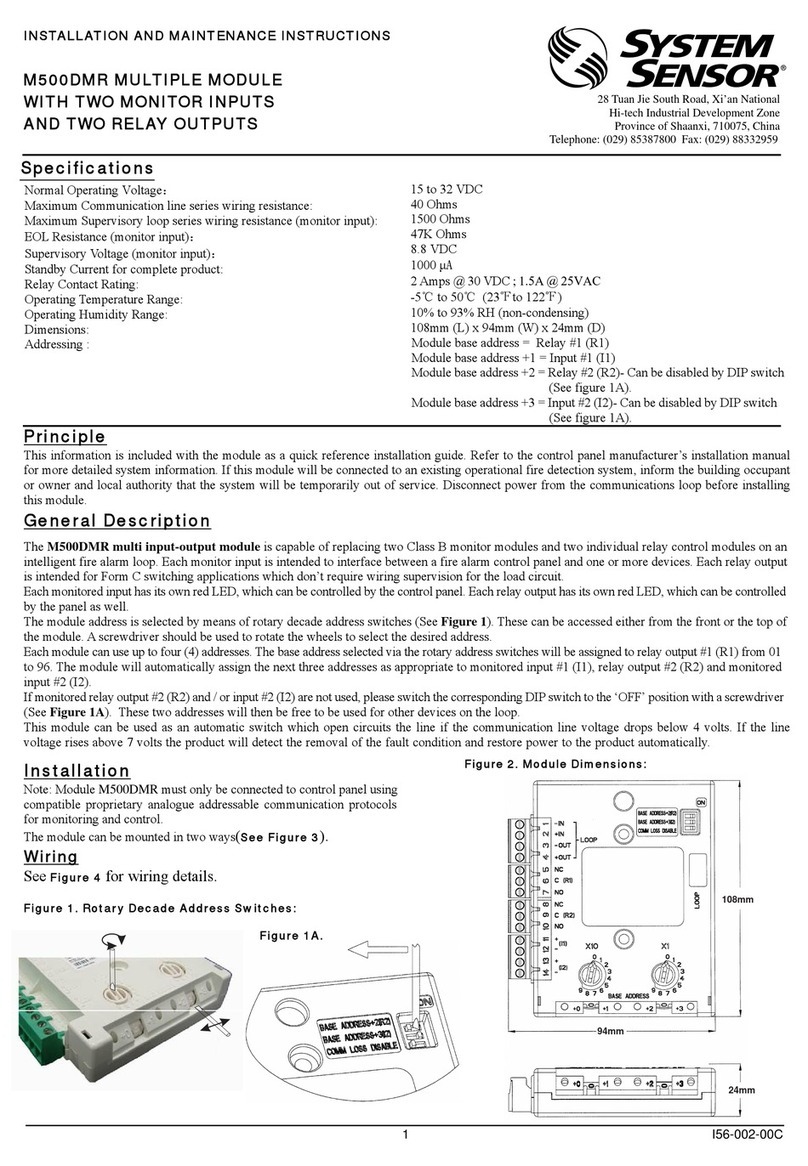
System Sensor
System Sensor M500DMR Installation and maintenance instructions
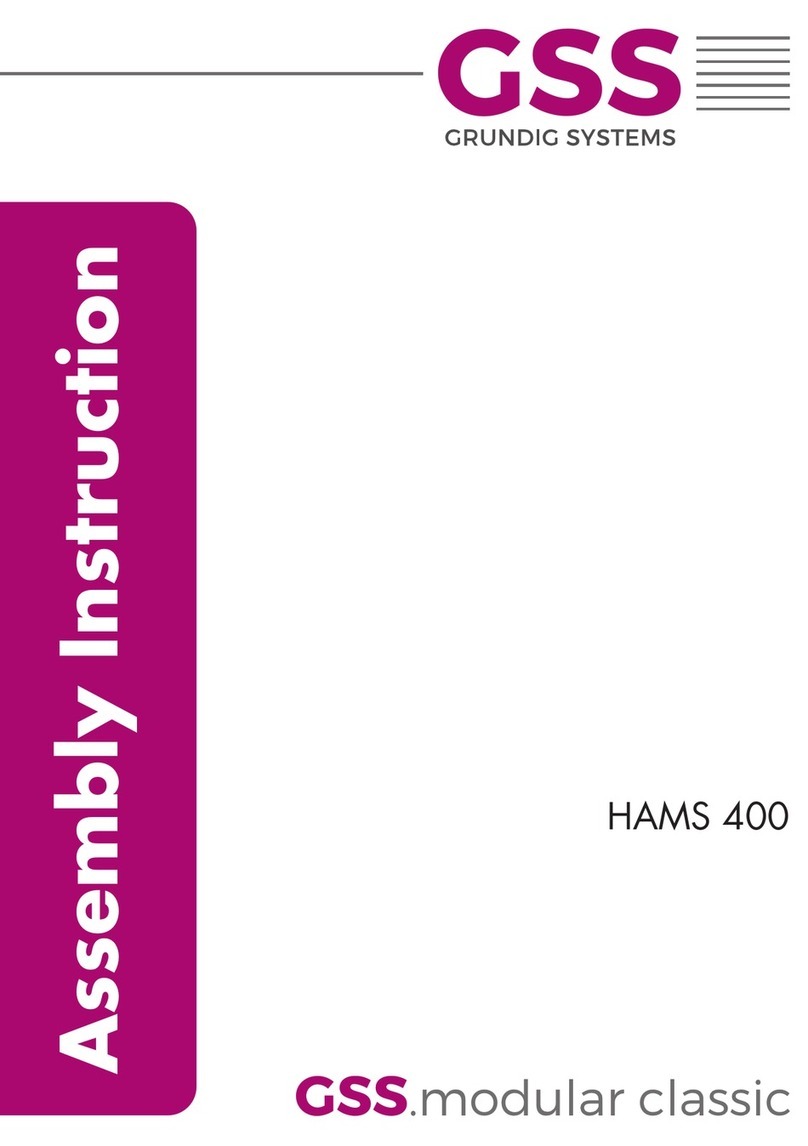
Grundig
Grundig GSS HAMS 400 Assembly instruction
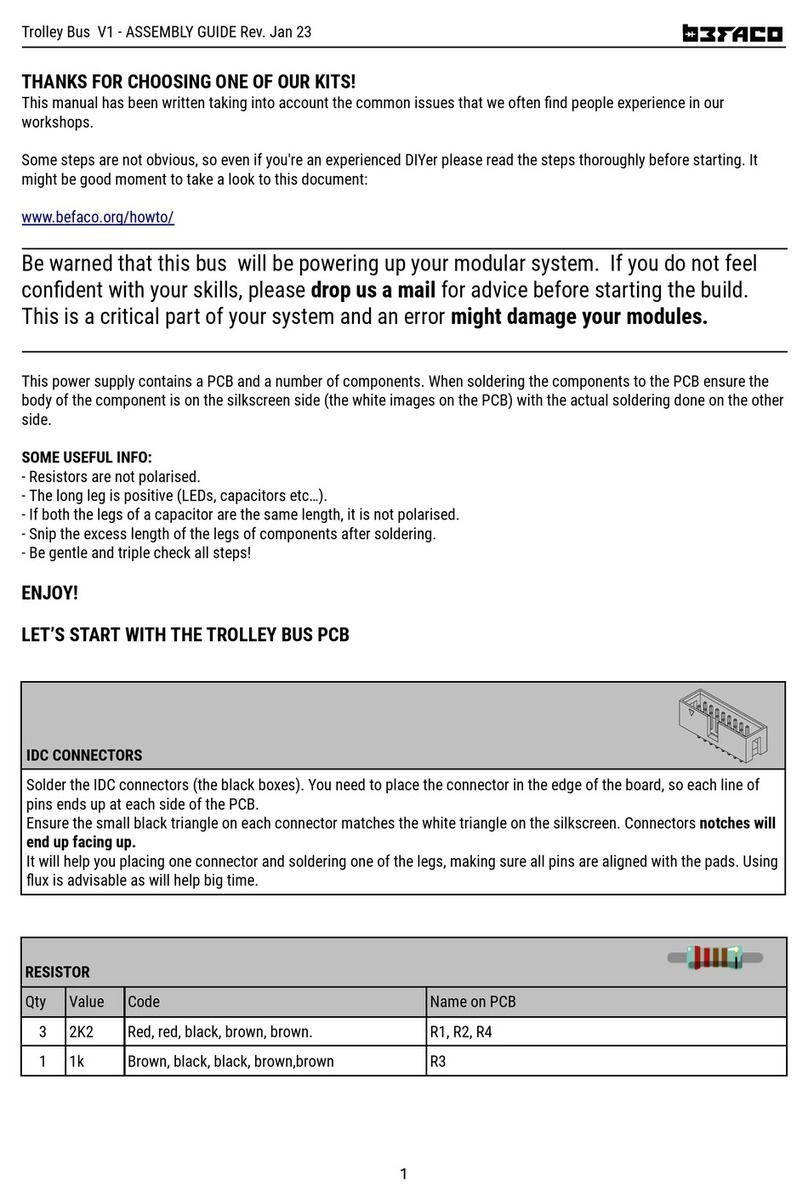
Befaco
Befaco Trolley Bus V1 Assembly guide

Leedarson
Leedarson LA02303B manual
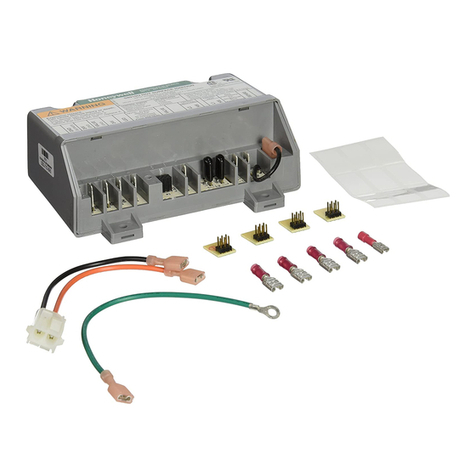
Honeywell
Honeywell S8910U Installation instructions and safety information
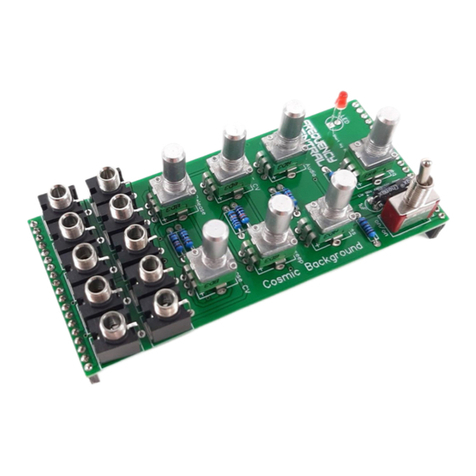
Frequency Central
Frequency Central Cosmic Background Build documentation
